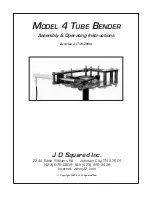
10
PROPER ROWING
TECHNIQUE
The rowing stroke can be divided into
two parts: the drive and the recovery .
The drive is in the work portion of the
strokes; the recovery is the rest portion
that prepares you for the next drive .
The body movements of the recovery
are essentially the reverse of the drive .
Blend these movements into a smooth
continuum to create the rowing stroke .
To view a video demonstrating proper
rowing technique, visit
concept2 .com/technique .
The Catch
• Arms are straight; head is neutral;
shoulders are level and not hunched .
• Upper body is leaning forward from the hips
with the shoulders in front of the hips .
• Shins are vertical, or as close to vertical
as comfortable for you . Shins should not
move beyond perpendicular .
• Heels may lift as needed.
The Drive
• Start the drive by pressing with your legs,
and then swing the back through the
vertical position before finally adding the
arm pull .
• Hands move in a straight line to and from
the flywheel .
• Shoulders remain low and relaxed .
The Finish
• Upper body is leaning back slightly, using
good support from the core muscles .
• Legs are extended and handle is held lightly
below your ribs .
• Shoulders should be low with wrists and
grip relaxed . Wrists should be flat .
The Recovery
• Extend your arms until they straighten
before leaning from the hips towards the
flywheel .
• Once your hands have cleared your knees,
allow your knees to bend and gradually
slide the seat forward on the monorail .
• For your next stroke, return to the catch
position with shoulders relaxed and shins
vertical .
TECHNIQUE
RECOMMANDEE POUR
RAMER
Le coup d’aviron peut être divisé en
deux phases : la propulsion et le retour .
La propulsion est la partie dynamique du
geste ; le retour vous permet de vous
préparer pour la prochaine propulsion .
Le geste du retour est essentiellement
l’inverse du mouvement de propulsion .
Combinez ces mouvements dans un
geste fluide pour créer le coup d’aviron .
Pour voir une vidéo de démonstration,
visitez concept2 .com/technique .
L’Attaque
• Les bras sont droits ; la tête est droite;
les épaules sont au même niveau et
détendues (non voûtées ni raides) .
• Le haut du corps est penché en avant à
partir des hanches avec les épaules devant
les hanches .
• Les tibias sont verticaux, ou proche de la
verticale selon votre confort . Il n’est pas
nécessaire d’avancer les genoux au delà
des chevilles .
• Les talons peuvent être soulevés selon
votre besoin .
La Propulsion
• Commencez la propulsion en appuyant sur
vos jambes, puis commencez la traction
des bras (épaules à 12h00 au dessus du
bassin) .
• Les mains se déplacent en ligne droite et
horizontale .
• Les épaules restent détendues .
La fin de coup
• Le haut du corps est faiblement penché
en arrière (épaules à 12h00 au dessus du
bassin), en utilisant le gainage des muscles
du tronc .
• Les jambes sont étendues et les poignets
sont maintenus légèrement en dessous de
vos côtes .
• Les épaules, les poignets, et les mains
doivent être détendus . Les poignets
doivent être à plat .
Le retour
• Étendez vos bras jusqu’à ce qu’ils soient
droits et pivoter le bassin pour faire
basculer le tronc vers l’avant .
• Une fois que vos mains ont passée vos
genoux, remontez progressivement vos
genoux en ramenant le siège vers l’avant
du monorail .
• Pour votre prochain geste, revenez à
l’attaque avec les épaules détendues et les
tibias verticaux .
DIE RICHTIGE
RUDERTECHNIK
Der Ruderschlag kann in zwei Phasen
unterteilt werden: der Durchzug und das
Vorrollen. Beim Durchzug arbeitet man,
während man beim Vorrollen sich erholt
und auf den nächsten Schlag vorbereitet .
Der Bewegungsablauf beim Vorrollen
ist dem beim Durchzug ähnlich, bloß in
umgekehrter Reihenfolge . Lassen Sie
diese Bewegungen ineinander fließen,
um eine Art Endlosschleife zu bilden .
Ein Video zum Thema finden Sie unter:
concept2 .de/indoor-rowers/training/
technikvideos .
Die Auslageposition
• Die Arme sind gestreckt, die Kopfposition
aufrecht, die Schultern sind locker.
• Der Oberkörper ist aus der Hüfte heraus
leicht vorgebeugt . Die Schultern sind leicht
vor der Hüfte positioniert .
• Die Position des Schienbeins ist senkrecht
zum Boden .
• Die Fersen können dabei leicht angehoben
sein .
Der Durchzug
• Beginnen Sie mit dem Durchzug, indem Sie
die Beine strecken . Richten Sie gleichzeitig
Ihren Oberkörper leicht nach hinten . Erst
wenn die Beine gestreckt sind, setzen Sie
Ihre Arme ein .
• Bewegen Sie die Hände in einer geraden
Linie Richtung Windrad .
• Ihre Schultern bleiben dabei locker .
Der Endzug
• Der Oberkörper ist zurückgelehnt.
• Die Beine sind gestreckt und der Griff
befindet sich leicht unterhalb des oberen
Rippenbogens .
• Die Schultern sollten locker sein, ebenso
wie die Hände . Das Handgelenkt ist flach .
Das Vorrollen
• Strecken Sie Ihre Arme, bevor Sie sich aus
der Hüfte heraus leicht nach vorne beugen .
• Wenn Ihre Hände an den Knien vorbei sind,
beugen Sie die Beine und rollen mit dem
Sitz nach vorne .
• Beginnen Sie von vorne aus der
Auslageposition .
Содержание INDOOR ROWER
Страница 1: ...INDOOR ROWERS PRODUCT MANUAL MODEL E MODEL D Light gray or black shown...
Страница 16: ...15 concept2 com technique concept2 com technique...
Страница 32: ...31 4 6 7 5...












































